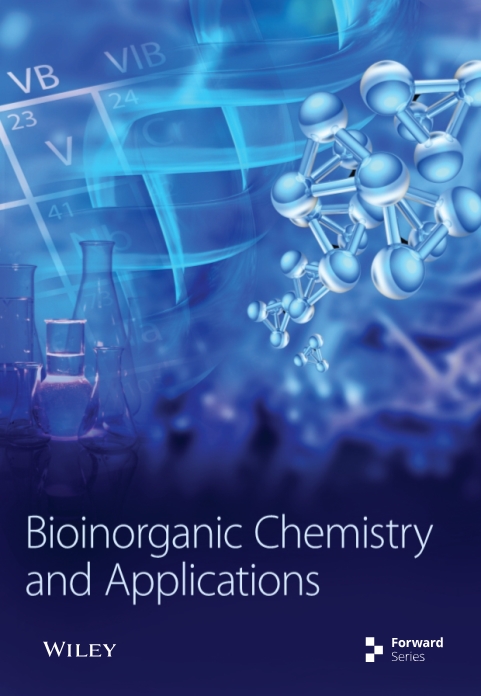Different Degrees of Sulfated Laminaria Polysaccharides Recovered Damaged HK-2 Cells and Inhibited Adhesion of Nano-COM and Nano-COD Crystals
IF 4.1
3区 化学
Q1 BIOCHEMISTRY & MOLECULAR BIOLOGY
引用次数: 0
Abstract
Purpose. The crystal adhesion caused by the damage of renal tubular epithelial cells (HK-2) is the key to the formation of kidney stones. However, no effective preventive drug has been found. This study aims to explore the recovery effects of four Laminaria polysaccharides (SLPs) with different sulfate (–OSO3–) contents on damaged HK-2 cells and the difference in the adhesion of damaged cells to nanometer calcium oxalate monohydrate (COM) and calcium oxalate dihydrate (COD) before and after recovery. Methods. Sodium oxalate (2.6 mmol/L) was used to damage HK-2 cells to establish a damaged model. SLPs (LP0, SLP1, SLP2, and SLP3) with –OSO3– contents of 0.73%, 15.1%, 22.8%, and 31.3%, respectively, were used to restore the damaged cells, and the effects of SLPs on the adhesion of COM and COD, with a size of about 100 nm before and after recovery, were measured. Results. The following results were observed after SLPs recovered the damaged HK-2 cells: increased cell viability, restored cell morphology, decreased reactive oxygen levels, increased mitochondrial membrane potential, decreased phosphatidylserine eversion ratio, increased cell migration ability, reduced expression of annexin A1, transmembrane protein, and heat shock protein 90 on the cell surface, and reduced adhesion amount of cells to COM and COD. Under the same conditions, the adhesion ability of cells to COD crystals was weaker than that to COM crystals. Conclusions. As the sulfate content in SLPs increases, the ability of SLPs to recover damaged HK-2 cells and inhibit crystal adhesion increases. SLP3 with high –OSO3– content may be a potential drug to prevent kidney stones.不同程度的硫酸化层状多糖可恢复受损的 HK-2 细胞并抑制纳米-COM 和纳米-COD 晶体的粘附性
目的:肾小管上皮细胞(HK-2肾小管上皮细胞(HK-2)受损导致的晶体粘附是肾结石形成的关键。然而,目前尚未发现有效的预防药物。本研究旨在探讨四种不同硫酸盐(-OSO3-)含量的层藻多糖(SLPs)对受损 HK-2 细胞的恢复作用,以及恢复前后受损细胞对纳米级一水草酸钙(COM)和二水草酸钙(COD)粘附性的差异。研究方法使用草酸钠(2.6 mmol/L)损伤 HK-2 细胞,建立损伤模型。用 -OSO3- 含量分别为 0.73%、15.1%、22.8% 和 31.3% 的 SLPs(SLP0、SLP1、SLP2 和 SLP3)修复受损细胞,并测量 SLPs 在修复前后对大小约为 100 nm 的 COM 和 COD 粘附性的影响。结果SLPs 使受损的 HK-2 细胞复原后,观察到以下结果:细胞活力增强,细胞形态恢复,活性氧水平降低,线粒体膜电位升高,磷脂酰丝氨酸倒置比降低,细胞迁移能力增强,细胞表面的附件蛋白 A1、跨膜蛋白和热休克蛋白 90 表达降低,细胞与 COM 和 COD 的粘附量减少。在相同条件下,细胞对 COD 晶体的粘附能力弱于对 COM 晶体的粘附能力。结论随着 SLPs 中硫酸盐含量的增加,SLPs 恢复受损 HK-2 细胞和抑制晶体粘附的能力也会增加。高-OSO3-含量的SLP3可能是一种预防肾结石的潜在药物。
本文章由计算机程序翻译,如有差异,请以英文原文为准。
求助全文
约1分钟内获得全文
求助全文
来源期刊

Bioinorganic Chemistry and Applications
化学-生化与分子生物学
CiteScore
7.00
自引率
5.30%
发文量
105
审稿时长
>12 weeks
期刊介绍:
Bioinorganic Chemistry and Applications is primarily devoted to original research papers, but also publishes review articles, editorials, and letter to the editor in the general field of bioinorganic chemistry and its applications. Its scope includes all aspects of bioinorganic chemistry, including bioorganometallic chemistry and applied bioinorganic chemistry. The journal welcomes papers relating to metalloenzymes and model compounds, metal-based drugs, biomaterials, biocatalysis and bioelectronics, metals in biology and medicine, metals toxicology and metals in the environment, metal interactions with biomolecules and spectroscopic applications.
 求助内容:
求助内容: 应助结果提醒方式:
应助结果提醒方式:


